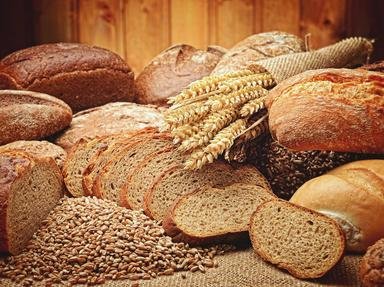Quiz Answer Key and Fun Facts
1. As far back as the Bronze Age, people in many areas often baked bread by pasting it to the inside of a clay oven. What modern bread is still made that way?
2. Bread recipes from England in the 17th and 18th centuries often start by directing the baker to "start a barm". What does this mean?
3. What industry generally supplied the yeast for bakers in England and continental Europe before the development of commercial yeasts?
4. For several hundred years in England, one large yeast-raised, bun-shaped bread type studded with caraway seeds was considered to be the essential working person's meal. It is very similar to a deli bun with a similar-sounding name that is considered to be a specialty of Buffalo, New York. What is it?
5. In the days when bread was baked in wood-fire ovens, it was normal to rake the hot coals out of the oven before baking.
6. Which yeast-raised bread was developed in early 19th-century Bath, England, possibly by a Huguenot baker with the same name?
7. Which of the following types of bread is traditionally braided?
8. What do bakers mean when they talk about "wild fermentation"?
9. Which is the most important reason to knead bread dough?
10. When baking French bread, it's usual to spray the inside of the oven with water. Why?
Source: Author
SBH
This quiz was reviewed by FunTrivia editor
WesleyCrusher before going online.
Any errors found in FunTrivia content are routinely corrected through our feedback system.


